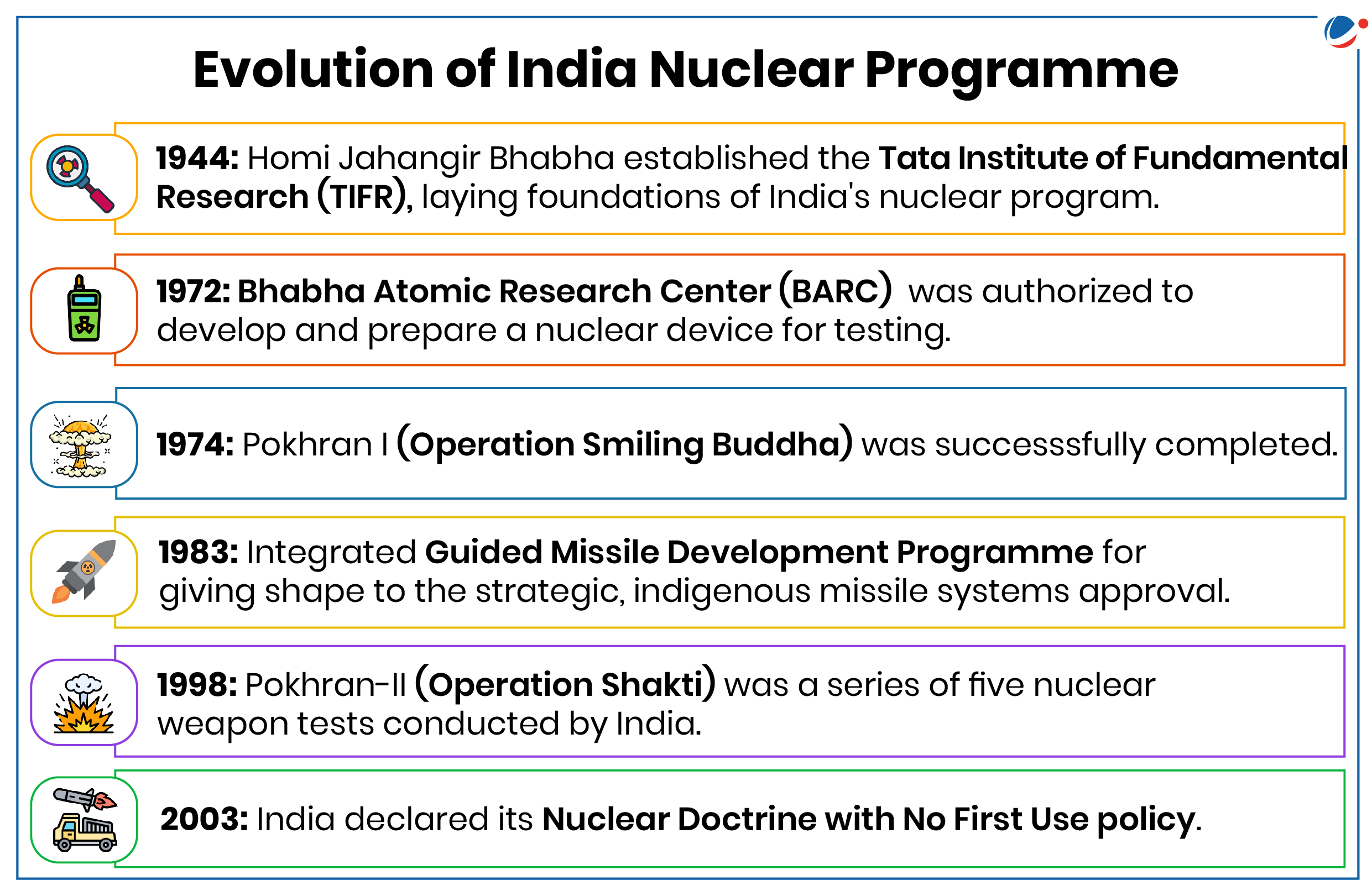Why in the News?
India is celebrating 50 years landmark of its first nuclear tests in Pokhran, Rajasthan, as part of the 'Smiling Buddha' operation conducted on 18th May 1974.
More about the news
- Operation Smiling Buddha (Pokhran I), was India's first nuclear explosion which was described as a peaceful nuclear explosion (PNE). PNEs are nuclear explosions for non-military purposes.
- India became the first nation apart from the P5 countries (five permanent United Nations Security Council (UNSC) members) – China, Russian Federation, France, the United Kingdom and the United States – to conduct the test.
About Operation Smiling Buddha or Pokhran I
- Location: Secret army test range located in the desert of Pokhran, Rajasthan
- Technique: A fission device using Plutonium as fuel.
- Importance
- Raised India's credible deterrence and national security.
- India had already fought three wars (1962 China war and 1965 & 1971 wars against Pakistan). Also, China had conducted its nuclear tests during 1964.
- It highlighted India's technological prowess in nuclear research.
- Raised India's credible deterrence and national security.

Impact of the test
- Technological Apartheid with India: In 1978, the US came out with the NuclearNon-Proliferation Act and stopped any nuclear assistance to India.
- India's nuclear policies was put under the technology restrictions by various western countries.
- India's strategic sector suffered because of no international technology collaboration. This period is famously known as the period of Technological Apartheid.
- Example: India's space program suffered in 1991, as USA had forced Russia to not transfer the cryogenic engine technology to ISRO.
- India as responsible nuclear power: India affirmed its status as a nuclear-capable state, laying the groundwork for future endeavours such as Pokhran-II in 1998.
- This nuclear explosion also laid the foundation for India's nuclear doctrine wherein India aimed to be recognized as a responsible nuclear power.
- After Pokhran II India also declared to follow the doctrine of 'No First Use policy'.
- Also, post Pokhran- II, India and USA signed the 123 Nuclear Agreement for peaceful uses of Nuclear Energy.
- This nuclear explosion also laid the foundation for India's nuclear doctrine wherein India aimed to be recognized as a responsible nuclear power.
Conclusion
The Pokhran-I nuclear test in 1974 was a turning point in Indian history. India has still not joined the NPT, but its intent is now clear, and the status of India as a responsible nuclear power has been largely accepted by the world. Nations like the USA have signed the Indo-US Nuclear Agreement of 2005-2008, and other Western countries are also cooperating with DRDO and ISRO.




